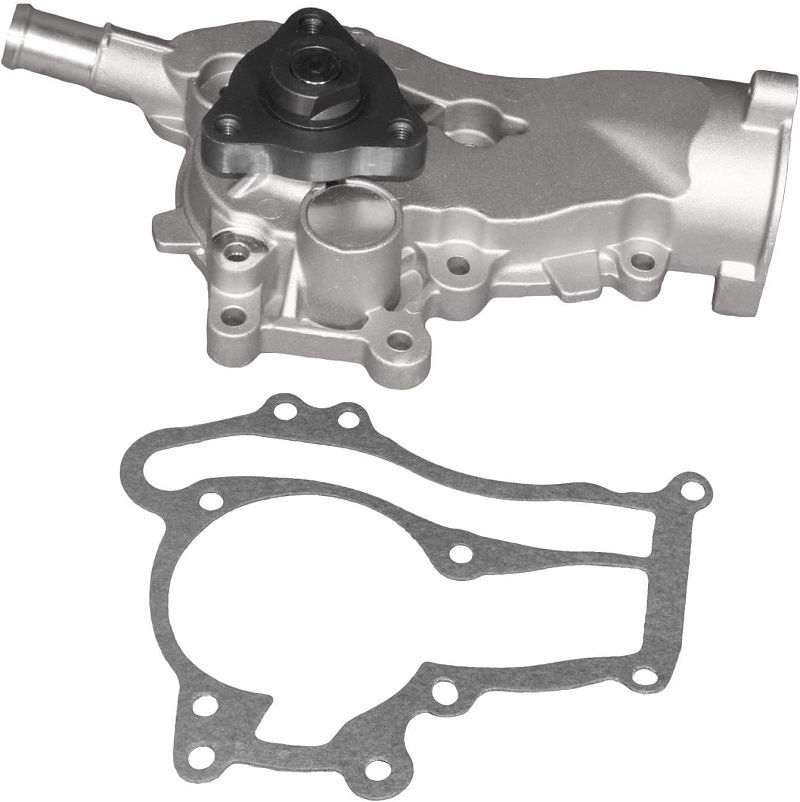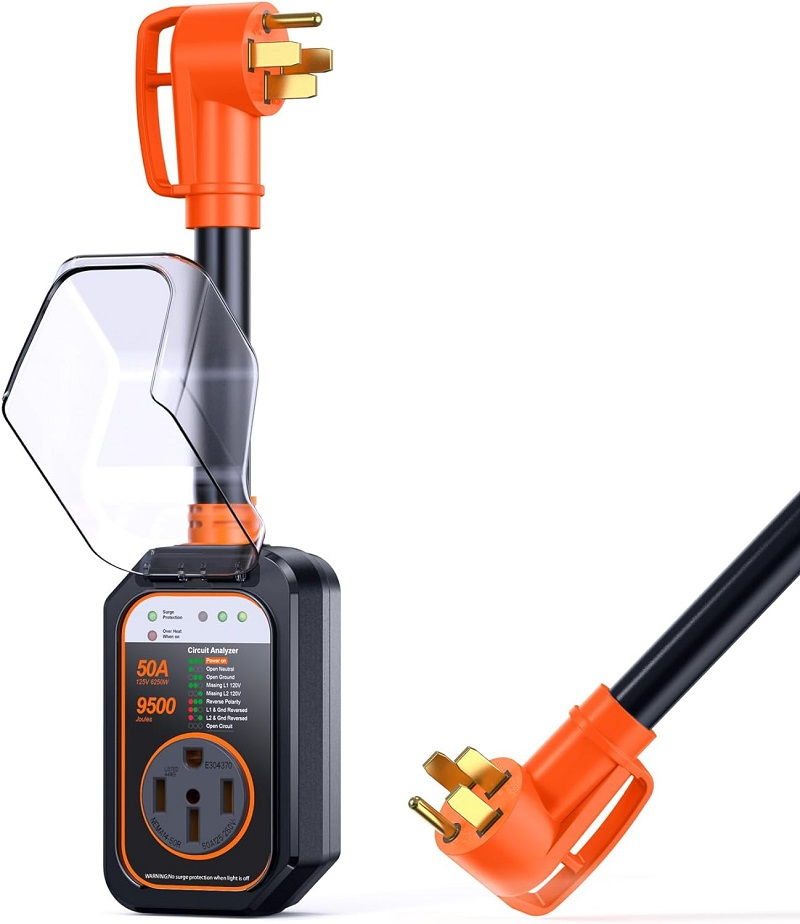This post contains affiliate links. This means I will make a commission at no extra cost to you should you click through and make a purchase [ “As an Amazon Associate, I earn from qualifying purchases.” ]. Read the full disclosure here.
Chevy Cruze Water Pump GuideMechanic.Com Are you a proud owner of a Chevy Cruze? If so, you probably understand the importance of keeping your vehicle in top-notch condition. One critical component that ensures your engine runs smoothly is the water pump.
In this comprehensive guide, we will delve into everything you need to know about the Chevy Cruze water pump, from its function and common issues to maintenance tips and replacement procedures. Whether you’re a DIY enthusiast or simply want to be well-informed, this article has got you covered.
Chevy Cruze Water Pump
Understanding the Water Pump
Check out this ACDelco Professional 252-996 Engine Water Pump

The water pump plays a vital role in the cooling system of your Chevy Cruze. It is responsible for circulating coolant throughout the engine, helping to regulate its temperature and prevent overheating.
The water pump is driven by a belt connected to the crankshaft, allowing it to continuously circulate coolant even when the engine is running at high speeds. This ensures that the engine remains at an optimal operating temperature, maximizing performance and efficiency.
Function of the Water Pump
The water pump’s primary function is to draw coolant from the radiator and push it into the engine block and cylinder heads.
This coolant absorbs the heat generated by the engine and carries it back to the radiator, where it is cooled before being recirculated. Without a properly functioning water pump, the engine would quickly overheat, leading to potential damage and costly repairs.
Components of the Water Pump
The water pump consists of several key components that work together to ensure proper coolant circulation. These include the impeller, housing, bearing, and seals.
See Also: 2015 Chevy Cruze Water Pump
The impeller, usually made of metal or plastic, is responsible for creating the necessary centrifugal force to move the coolant. The housing encloses the impeller and provides a pathway for the coolant to flow.
The bearing supports the rotating impeller and allows it to spin freely, while the seals prevent coolant leaks and maintain proper pressure within the system.
Common Issues with Water Pumps
Like any mechanical component, water pumps can experience issues over time. Some common problems include coolant leaks, bearing failure, impeller damage, and seal deterioration. Coolant leaks can occur due to a faulty gasket or seal, resulting in a loss of coolant and potential engine overheating.
Bearing failure can cause the impeller to seize or wobble, leading to decreased coolant flow and engine performance. Damaged impellers or worn seals can also contribute to coolant leaks and decreased efficiency.
Chevy Cruze Water Pump
Signs of a Failing Water Pump

It is crucial to be aware of the signs that indicate a failing water pump in your Chevy Cruze. Catching these symptoms early can help prevent further damage to your engine and save you from costly repairs down the line. Here are some common signs to watch out for:
Coolant Leaks
One of the most apparent signs of a failing water pump is coolant leakage. You may notice puddles of coolant under your vehicle, especially near the front of the engine. Coolant leaks can occur from the water pump’s gasket, seal, or housing, and should be addressed promptly to prevent overheating and engine damage.
Engine Overheating
If your engine consistently runs hot or frequently overheats, it could be a sign of a failing water pump. When the water pump fails to circulate coolant properly, the engine’s temperature can quickly rise, leading to overheating.
If you notice your temperature gauge consistently in the red zone or receive a warning light, it’s essential to address the issue promptly.
Unusual Noises
A failing water pump may produce unusual noises, such as grinding, squeaking, or rumbling sounds. These noises can indicate bearing failure or impeller damage, causing the pump to operate inefficiently. If you hear any abnormal sounds coming from the engine, it’s advisable to have it inspected by a professional mechanic.
Coolant Discoloration or Contamination
Inspecting your coolant regularly can provide insights into the health of your water pump. If you notice the coolant is discolored, cloudy, or contains debris, it may indicate a failing water pump. Contaminated coolant can lead to clogging, decreased performance, and potential damage to the cooling system components.
Engine Performance Issues
A failing water pump can impact your engine’s performance. If you notice decreased power, rough idling, or poor acceleration, it could be due to inadequate coolant circulation. The lack of proper cooling can affect the combustion process, resulting in reduced engine efficiency.
Water Pump Maintenance
Proper maintenance is essential to ensure the longevity and optimal performance of your Chevy Cruze’s water pump. By following these maintenance tips, you can minimize the risk of water pump failure and expensive repairs:
Regular Coolant Checks
Checking your coolant levels and condition regularly is crucial for maintaining a healthy water pump. Consult your vehicle’s owner’s manual for specific instructions on how to check the coolant levels.
See Also: 2013 Chevy Cruze Water Pump
If the coolant is low, it could indicate a leak or a failing water pump. Additionally, inspect the coolant for any signs of contamination, such as debris or oil, as this may also indicate an issue with the water pump.
Belt Tension Inspection
The water pump is driven by a belt connected to the crankshaft. Over time, the belt can become worn or loose, affecting the water pump’s performance.
Regularly inspect the belt tension and look for any signs of wear or cracking. If the belt appears loose or damaged, it should be replaced promptly to ensure proper water pump operation.
Recommended Replacement Intervals
While water pump lifespan can vary depending on various factors, it is generally recommended to replace the water pump every 60,000 to 90,000 miles or as advised by the vehicle manufacturer.
Regularly replacing the water pump at the recommended intervals can help prevent unexpected failures and keep your engine running smoothly.
Proper Coolant Selection
Using the correct coolant recommended by the vehicle manufacturer is crucial for the water pump’s longevity. Different vehicles may require specific coolant formulations to maintain optimal performance.
Consult your owner’s manual or speak with a trusted mechanic to ensure you are using the appropriate coolant for your Chevy Cruze.
Regular Cooling System Inspections
It is advisable to have your cooling system inspected by a professional mechanic at regular intervals, such as during routine maintenance visits.
A thorough inspection will help identify any potential issues with the water pump or other cooling system components before they escalate into more significant problems.
Chevy Cruze Water Pump
DIY Water Pump Replacement
Check out this GEARGO RV Surge Protector 50 Amp RV Circuit Analyzer Surge Guard Full Protection(9500 Joules), RV Adapter Plug for Camper(Orange)

If you’re a hands-on individual and have the necessary mechanical skills, replacing the water pump in your Chevy Cruze can be a cost-effective option.
However, it is essential to have the right tools, follow proper safety precautions, and be familiar with the replacement procedure before attempting it yourself. Here is a step-by-step guide to help you through the process:
Gather the Necessary Tools and Parts
Before starting the water pump replacement, ensure you have all the required tools and parts on hand. Some common tools you may need include a socket set, wrenches, pliers, a torque wrench, and a gasket scraper. Additionally, make sure you have a replacement water pump that is compatible with your Chevy Cruze’s make, model, and engine.
Prepare the Vehicle
Start by preparing your vehicle for the water pump replacement. Park the car on a level surface and engage the parking brake. For safety, disconnect the battery and allow the engine to cool before proceeding.
Drain the Coolant
Place a suitable container beneath the radiator drain plug to catch the coolant. Open the drain plug and allow the coolant to drain completely. Dispose of the coolant properly according to local regulations. Remember to wear protective gloves and eyewear during this step to avoid contact with the coolant.
Remove the Serpentine Belt
To access the water pump, you will need to remove the serpentine belt. Locate the belt tensioner and use a wrench or socket to relieve tension on the belt. Slide the belt off the water pump pulley and carefully release the tensioner.
Remove the Water Pump
With the belt removed, you can now remove the water pump. Begin by disconnecting any hoses or electrical connectors attached to the water pump.
See Also: 2012 Chevy Cruze Water Pump
Then, unbolt the water pump from the engine using your socket set or wrench. Be sure to keep track of the bolts and their respective locations for easy reinstallation.
Clean the Mounting Surface
Once the water pump is removed, thoroughly clean the mounting surface on the engine block. Use a gasket scraper or a suitable tool to remove any remnants of the old gasket or sealant. Clean the surface until it is smooth and free of debris.
Install the New Water Pump
Apply a thin layer of gasket sealant or silicone to the new water pump’s mounting surface. Carefully position the new water pump onto the engine block, ensuring the bolt holes align correctly. Hand-tighten the bolts initially, then torque them to the manufacturer’s specifications usinga torque wrench.
Reinstall the Serpentine Belt
With the new water pump securely in place, it’s time to reinstall the serpentine belt. Refer to your vehicle’s diagram or markings to ensure the belt is routed correctly around the various pulleys. Use a wrench or socket to relieve tension on the belt tensioner and slide the belt back onto the water pump pulley. Release the tensioner slowly, allowing it to apply tension to the belt.
Refill the Coolant
Now that the water pump replacement is complete, it’s time to refill the coolant. Use a suitable coolant recommended by the vehicle manufacturer and follow the instructions for proper mixing ratios. Slowly pour the coolant into the radiator until it reaches the recommended level. Replace the radiator cap securely.
Check for Leaks
Start the engine and let it run for a few minutes while monitoring for any coolant leaks. Inspect the area around the water pump and hoses for signs of leakage. If you notice any leaks, immediately turn off the engine and address the issue before continuing.
Dispose of Old Coolant
Properly dispose of the old coolant according to local regulations. Coolant is toxic and harmful to the environment, so it’s crucial to handle and dispose of it responsibly. Consult your local recycling center or automotive service facility for proper disposal methods.
Chevy Cruze Water Pump
Cost of Water Pump Replacement
The cost of water pump replacement can vary depending on several factors, including the make and model of your Chevy Cruze, the location of the repair shop, and whether you choose an OEM or aftermarket water pump. Here’s a breakdown of the potential costs involved:
Parts Cost
The price of the water pump itself can range from $50 to $200, depending on the brand and quality. OEM water pumps tend to be more expensive than aftermarket options, but they may offer better fitment and reliability.
Labor Cost
The labor cost for water pump replacement can vary significantly depending on the mechanic’s hourly rate and the complexity of the job. On average, you can expect to pay between $200 and $500 for labor. Keep in mind that this cost may increase if additional repairs or maintenance tasks are required.
Total Cost
Considering both parts and labor, the total cost of water pump replacement in a Chevy Cruze typically ranges from $250 to $700. However, it’s important to obtain a detailed quote from your chosen mechanic, as prices can vary based on location and individual circumstances.
- Trucks with Navigation for Sale - June 30, 2025
- Trucks with Camper Shell for Sale - June 30, 2025
- Trucks for Hauling Heavy Loads - June 30, 2025
